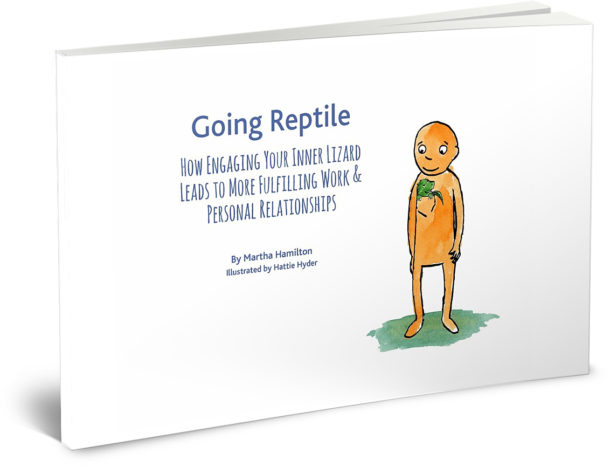In this post we are continuing our inquiry into the various ways in which we humans respond to stressful situations and environments (VUCA: Volatility, Uncertainty, Complexity, and Ambiguity). If you’re just joining the series, you may want to go back to the beginning and read the introduction.
If you’re joining us mid-stream, here’s a little background: We’re all hard-wired to react to stress with “fight-or-flight” behavior that served our ancestors, but often gets us into trouble in our increasingly complex 21st century world. By understanding the particular ways in which our “inner lizards” emerge during stress, we’re better prepared and able to act out of our higher human capacities.
There are 4 general styles that our inner lizards tend to exhibit (Fight, Flight, Freeze, and Fawn), and in this post, we’re going to continue our exploration of the first style, Fight, by getting acquainted with one of the primary ways that this style appears: we become “The Superior One.”
People who exhibit The Superior One style, tend to respond to feeling pressure, overwhelm, or other stressors, by being better than everyone else. They have learned that if they can show themselves to be superior to others, they feel safer.
This can show up as hubris, or as some other form of puffing one’s self up. Condescension and disdain are often present, gaining power by making others small.
Indicators: Condescension, disdain and outright belittling of others as the tension of a situation increases
It’s not so easy to see ourselves as acting superior, yet, if we want to bring more of our pre-frontal cortex online, the first step is to get to know our more subtle reactive patterns. If you are cringing in recognition, go easy on yourself. You are not alone.
Remember, these styles, these forms of reactivity, are learned as responses to environments that did not work for us as children. At one time they were creative responses to a very real threat. When these responses are acted out in our adult lives they can have a childlike quality about them.
What is one to do?
Observation: Get to know the reactive styles that are showing up in yourself, and those around you. This is not about blaming or shaming, this is about humble recognition.
Understanding: Reactivity is wired into us by design – it is not a flaw. It’s a human safety feature. The question is whether reactions that saved us when we were younger still serve us now, particularly in a work or relational context.
Get and Stay connected: Shame, blame, complaining, explaining, justifying, defending and denying are indicators of disconnection – from ourselves and others. Many of us learned to disconnect as children, and these indicators – this disconnection – may seem so normal, so usual, that they are hard to see as an indicator of anything. Yet, as adults, we need the capacities that come with being connected. If we are going to face VUCA environments (volatile, uncertain, complex and ambiguous) with the capacity to navigate them effectively, connection is required.
What we resist persists: If you find yourself in some form of “If __ could only be different, this would all be so much easier…” you are in the middle of this dynamic. For some of us, this is so “business as usual” that it may be hard to recognize as a contributing factor to the very issues that you want to address.
Get to know your styles: This brings us back to observation. Compassion is central to loosening reactive styles. If you blame yourself or others for how they react, the safety styles – the reactive patterns – become more entrenched and cleverer. Their job is protection. They do it well.
By learning to see and get to know your own and other’s styles, and by appreciating that they were created for a reason, the styles, the protections, can begin to relax. More of the pre-frontal cortex becomes accessible, and effectiveness and capacity expand. Sometimes just noticing begins to shift patterns, other times we require outside support to be able to see and recognize what is happening.
In my next post, we’ll finish up our exploration of the Fight Styles.

